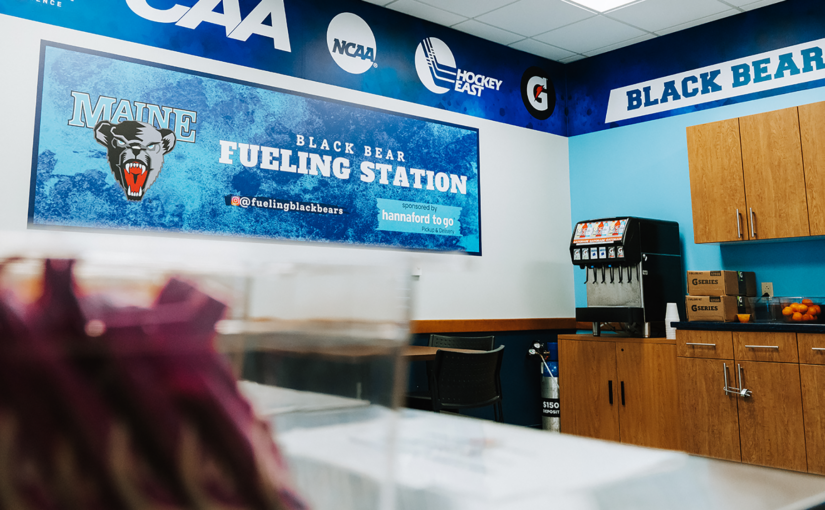What! No Distance Running?
This summer is different because of the coronavirus, so I’m offering some advice to football strength coaches as they resume activities.
Most athletes have had a long layoff from structured, organized training. As schools are allowed to return to practice, coaches will be anxious to get athletes back into shape. High school, college, and even pro players need to be smart and not overtrain trying to make up for those missed workouts. Unfortunately, a large number of football coaches believe doing distance running prepares athletes in power sports to sustain energy levels through the end of a football game. Building an aerobic base contributes little to the improvement of a football player’s performance.
This may seem controversial and hard to believe, but it is based on how the body works and how the body gets energy to perform work.Some coaches understand distance running is not the correct energy system for power sports like football, basketball, and baseball, but they do it for mental toughness and that is my concern. Athletes will be at various stages of physical condition. Some will report in great shape while others will not have been able to train much. I’m concerned that football coaches will force their strength coach to make their players do distance running.
 The sport of football is not a long continuous activity. Each play involves an effort of 100% intensity for roughly five seconds. Between each play, there is an average of 50 seconds of rest which includes timeouts and penalties. Football is not an endurance sport. The demand for ATP (energy) is high during a football play, and as the play ends, the ATP tank is nearly drained. Proper rest between plays allows the energy tank to refill to almost maximum capacity. This rest between plays allows maximum intensity for fast-twitch fibers on the next play. The players should be almost as powerful on the last play of the game as the first play of the game. That’s the part that some coaches fail to realize. The refilling of the ATP energy tank continues to happen in the fourth quarter if you have trained properly.
The sport of football is not a long continuous activity. Each play involves an effort of 100% intensity for roughly five seconds. Between each play, there is an average of 50 seconds of rest which includes timeouts and penalties. Football is not an endurance sport. The demand for ATP (energy) is high during a football play, and as the play ends, the ATP tank is nearly drained. Proper rest between plays allows the energy tank to refill to almost maximum capacity. This rest between plays allows maximum intensity for fast-twitch fibers on the next play. The players should be almost as powerful on the last play of the game as the first play of the game. That’s the part that some coaches fail to realize. The refilling of the ATP energy tank continues to happen in the fourth quarter if you have trained properly.
Training aerobically is not the answer for football.
It is important to know your athletes on an individual basis to find out what they have been doing or not doing then create a program that will cater to each individual’s needs. Every strength and conditioning program should begin with the testing and evaluation of each participant before any program is implemented. By learning an athlete’s strengths and weaknesses it is much easier to direct their training and achieve maximum results. Re-testing will determine if the program has effectively achieved your goals.
Test the vertical or horizontal jump, 10-yard dash, and pro agility run (electronically). Also, test the squat and hang clean. Retest again just before the start of the season to measure how much progress they have made in your program. This will be important to show your coach that your program has helped the team get bigger, faster, more agile, more powerful, and stronger.
Let me relate what I’ve learned which should help convince you to put a plan into action as soon as you get a green light to resume training. One of the factors in becoming Nebraska’s first strength coach was having worked with injured players who could not run. I saw tremendous gains in their strength and lean body mass by lifting only. When they went back to practice they were much faster and stronger than they had been which caught the eye of the coaches.
One of my former strength coaches was training high school-age athletes. He had no indoor field house or indoor area to run which concerned him. He felt his athletes would not be in shape if they couldn’t run. I saw this situation as an opportunity for us to measure the results of a program that incorporated little or no running and emphasized recovery time.
I was getting a lot of push back from a couple of my football position coaches to do distance running and I needed proof as to why that was hurting the players’ development and not helping as they believed. I asked the strength coach to pre-test his athletes then have them lift for six weeks with no running and follow up with post-testing to show just how much his athletes could improve their speed and agility. I knew they would get stronger and more powerful but how much faster could they get? His test scores showed as much improvement in six weeks as some athletes in other programs were making in four years.
An important part of what a strength coach brings to the table is the improvement of speed and agility for football. Strength coaches would be wise to focus on building lean body mass which will improve speed and agility.
I’m afraid we will see the opposite this summer. Coaches may step in and pressure strength coaches to do a lot of running, believing that is the solution to “getting them in shape”. That would be a mistake. Distance running and drills that require a lot of endurance will hamper the strength gains which means it will hamper the speed and agility development. Not only will that kill the development it will also hamper success well into the new season. Football is played with 360 degrees of movement. Much of the time, players don’t even run forward. They move laterally to flow with a play or backward to drop into coverage. It only makes sense that a conditioning program should incorporate game-like movements so they can transfer easily to the field.
Allow your focus to be on getting strong without any distance running to interfere with the recovery. Once the strength is gained it is easy to maintain. Programs that start with running will never allow athletes to build as much lean body mass. Therefore they won’t have the leg strength to put force into the ground to accelerate or decelerate to change directions.
Strength training is magical, and it is a great way to prepare your athletes returning from this pandemic. Recovery is an essential part of this process so you will want to eliminate all endurance activities during this time — no running except for some agility drills, no basketball no wrestling and NO MISSED workouts. The athletes need to commit to every workout. They need to be motivated so challenge them. One missed workout could alter the results. Get 100% attendance and you’ll be amazed at the results!
Testing can serve as a great motivator. Once the athlete begins achieving goals they will be eager to set higher goals. Coaches that make the effort to test, evaluate, and set goals, have results that can be documented.
Boyd Epley was the Head Strength Coach for the University of Nebraska for 35 years with 356 wins including five national championships for football.





